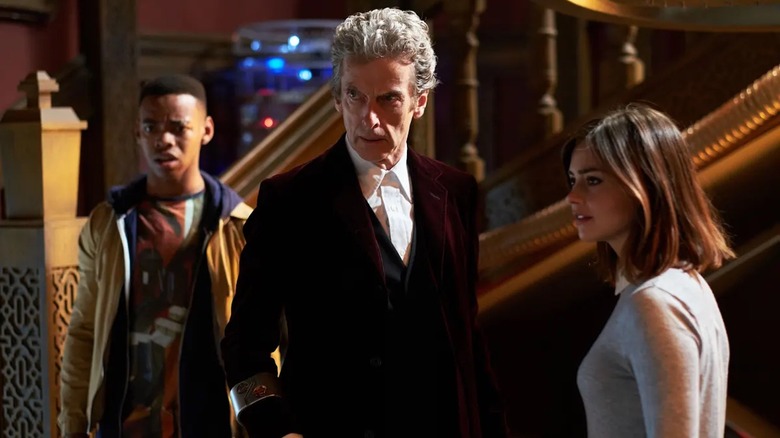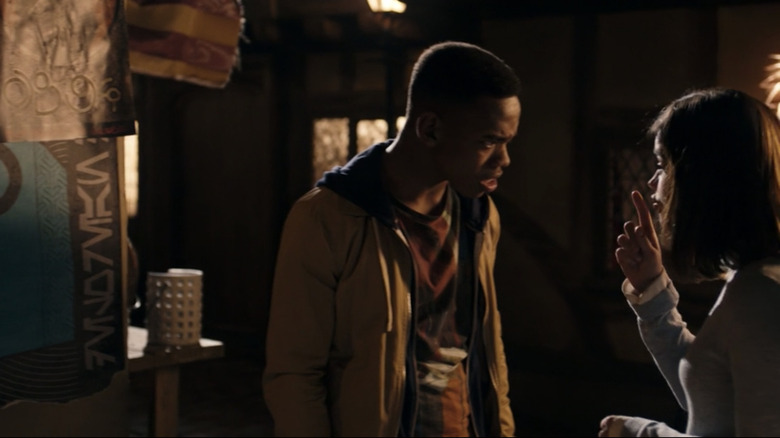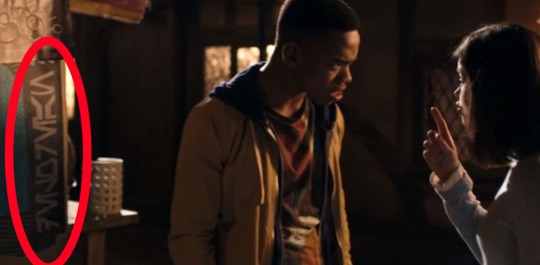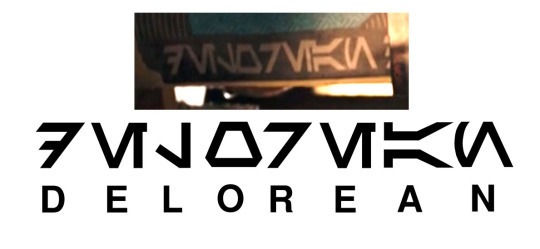The Subtle Star Wars Easter Egg You Probably Missed In Doctor Who
Over the course of the show's nearly 60-year history, "Doctor Who" has largely kept its fingers on the pulse of our planet's popular culture. After all, despite being able to travel across space and time, the Doctor does spend a considerable amount of time on Earth. Presumably, the Gallifreyan Time Lord keeps up with trends by listening to music, reading books, or watching films and television when not wrapped up with saving the world. They even have enough of an interest in art to become a Curator for some time. At the very least, they have a general working knowledge of things so they are able to talk about Harry Potter, Spider-Man, or "Star Trek" here and there.
But in a clear case of "game recognizes game," the long-running sci-fi series has referenced "Star Wars" in a number of ways over the years. The Sixth Doctor attended the American premiere of "Star Wars: A New Hope" in the 1998 "Doctor Who" novel titled "Mission: Impractical." The Eleventh Doctor compared himself to Yoda in the "Meanwhile in the TARDIS" minisodes from the "Doctor Who: The Complete Fifth Series" box set. The Ninth Doctor even claimed that the TARDIS has made the Kessel Run in the 2016 Titan Comics miniseries "Supremacy of the Cybermen." Although, there was a much less obvious "Star Wars" Easter egg in an episode that Whovians might have easily missed. Not only that, but it's also a reference to yet another seminal piece of time travel media.
Darth Vader from the planet Vulcan
The Easter egg in question can be found in the second season featuring Peter Capaldi's iteration of the Doctor. In the tenth episode of the ninth series from 2015 titled "Face the Raven," the Twelfth Doctor and Clara Oswald reunite with old friends Ashildr (played by "Game of Thrones" star Maisie Williams) and Rigsy ("Doom Partrol" star Joivan Wade) as the Doctor and his companions come face to face with death. Spoilers sweetie, but fans will probably remember this episode as the one where Clara dies. However, before we reach that climax, there is a scene where Clara and Rigsy are talking in an alleyway. As the camera pans from left to right to focus on the duo, you may notice some script on the nearby wall around the 25:19 mark. If you do, then you've found it!
The script is actually letters from the Aurebesh alphabet. In "Star Wars," Aurebesh is one of the writing systems used to transcribe the most prevalent language in the galaxy, Galactic Basic Standard. Humans, Pantorans, Toydarians, and Gungans are among the species that use the language, so you may see it represented in Aurebesh throughout the franchise on wanted posters, starship screens, or (as seen here in "Doctor Who") as graffiti.
This isn't just a "Star Wars" reference, though. When you translate the Aurebesh, you'll see that the writing on the wall spells out "Delorean," which many know as one of the most iconic movie vehicles of all time thanks to the foresight of Doc Brown in "Back to the Future" to build his time machine into a car with some style. Check out how the translation breaks down in this graphic courtesy of IGN.
It's pretty cool to see "Doctor Who" pay homage to two of the most beloved pieces of modern sci-fi like this. I'm sure that there are little shoutouts like this scattered all over the series. As you go back to hunt for those eggs, remember this advice directly from the Doctor: "Never ignore a coincidence. Unless you're busy, then always ignore a coincidence."



